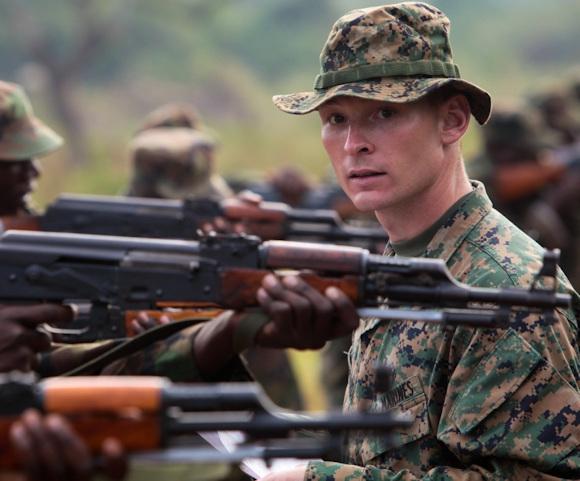Africa is an extremely complex continent in which, with the passage of time, the ancient problems were superimposed on those left by the end of colonialism and the process of independence which, often, had unnatural trends, especially in the creation of borders in many artificial cases. Many problems, in fact, originated from the constitutive criteria of the new state entities, with borders drawn by the colonial powers with rules that are absolutely foreign to local realities, bringing different and often rival ethnic groups to coexist within a state. This initially provoked a series of inter-state armed conflicts and then assumed an almost exclusively national and inter-ethnic or sectarian connotation within the individual countries, often resulting in interminable tribal conflicts, in which even so-called children are still employed today. soldier, forcibly recruited by local warlords to be employed as fighters. Internal conflicts limited geographically, but which have sometimes had regional consequences.
More rarely, other armed conflicts, such as the reckless and careless Libyan intervention, have caused significant geopolitical repercussions that have spread from the continent throughout the Mediterranean area and the Middle East.
When it comes to Africa, however, it is necessary to distinguish which Africa we are referring to. In fact, it is a continent that is too vast, varied and complex, with an extremely diverse reality to think of being able to squeeze it into a single narrative.
It is a continent in which extreme situations coexist with a wide range of intermediate shades, divided in fact into two distinct entities. Northern Africa, which goes from Morocco to Egypt, is in fact profoundly different from sub-Saharan Africa. The first, for example, has been intimately linked to Europe for over two thousand years of history while the second has only been so for two centuries, marked first by great geographical explorations and then by colonialism. The same area has also known a tremendous conflictual relationship with America, represented by the slave trade. It is probably because of these profound differences that, while much is said and written about Mediterranean Africa, geographically closer to us, little is read about the part of the continent that is further south, beyond the Sahara desert.
However, it is worthwhile to take a look at this continent almost unknown to most, which represents 17,85% of the inhabited emerged land (2,5 times Europe) and today hosts 13,85% of the world population.1.
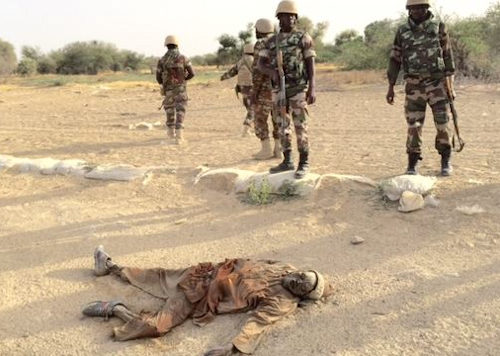 Sub-Saharan Africa is indeed a difficult continent, grappling with frightening social, economic, political and infrastructural problems. The horrible violence perpetrated by Boko Haram in Nigeria and neighboring countries, the emergency represented by the outbreaks of religious extremism that refers to an intransigent reading of the Koran, the civil wars that have bloodyly involved some countries (Congo, South Sudan, Mali, Horn of Africa, etc ... ) mercilessly demonstrate the enormous fragility of this continent.
Sub-Saharan Africa is indeed a difficult continent, grappling with frightening social, economic, political and infrastructural problems. The horrible violence perpetrated by Boko Haram in Nigeria and neighboring countries, the emergency represented by the outbreaks of religious extremism that refers to an intransigent reading of the Koran, the civil wars that have bloodyly involved some countries (Congo, South Sudan, Mali, Horn of Africa, etc ... ) mercilessly demonstrate the enormous fragility of this continent.
Of all the continents of the world, sub-Saharan Africa is the one that has lagged the most in terms of general progress, growth and development of the economy, improvement of the quality of life of the population and evolution of civil society, under various aspects the spread of education, the advancement of the condition of women, the fight against poverty, hunger, disease.
Despite some progress, some fifty million children and adolescents still fail to attend school today. Even among the educated, the level of education is on average lower than in other areas of the planet, especially as regards higher education. Finally, the health sector is often inadequate and powerless in the face of recurring, very serious epidemics and infant mortality, although decreasing, is still extremely high. As a result of its local realities and its regional contradictions derives its main characteristic: fragmentation.
Economic situation
Forty-nine countries, of which only a few have the conditions to develop a truly solid structure and economy. Most of the economy is still about 60% dependent on agriculture, but yields are on average lower, around one third / one quarter of those found in Asia. From the end of colonization to today, there are still areas of serious economic and social backwardness. One in three inhabitants, for example, does not have free access to water and millions of people still live in conditions of extreme poverty. The level of per capita income is varied but generally low, falling below the poverty level (less than $ 2 a day) in the Sahel.
Resource distribution is extremely problematic. In fact, it is estimated that only 100.000 Africans, out of the current total population of about one billion and one hundred thousand, hold 60% of the wealth of the entire continent.
 Further limits to development are represented by the scarcity of infrastructures, with the exception of those relating to mobile telephony, which is widespread.
Further limits to development are represented by the scarcity of infrastructures, with the exception of those relating to mobile telephony, which is widespread.
Compared to the conditions existing at the end of the colonial period, there was an average development of 5%, with peaks even higher than 12%. This in the past has made screaming (hastily) for an "African renaissance", coining the expression "Lions of Africa" to tell the exceptional macroeconomic performance of some countries of the continent over the last decade, adapting the story of “Asian tigers” of the 90s. The economy of the area, however, is not yet in step with the global one and the overall GDP does not significantly affect the world one (2,8%), so much so that all the countries of sub-Saharan Africa in the 2019 recorded a GDP (USD 2.434 billion) lower than that of France (USD 2.716 billion)2. Furthermore, growth was mainly induced by exports of raw materials, and is therefore very exposed to changes in the prices of the latter and to the vicissitudes of outlet markets.
A further impediment to economic progress is the fact that many countries lack access to the sea. Given the state of communication routes and the often hostile relations that reign between one state and another, this situation often represents an almost insurmountable obstacle.
The African Union, an organization that unites all African countries under its umbrella, has done and does what it can to settle disputes, but suffers from a structural fragility that does not allow it to contribute decisively to the development of all its potential that the continent presents.
The demographic problem
Even if life expectancy revolves on average around 40 years, the problem that has the greatest economic and social implications, even outside the continent, is the uncontrolled increase in population. Sub-Saharan Africa (whose population is expected to reach over 1,5 billion by 2050) in fact records, and will continue to record in the coming years, the highest demographic increase and the highest birth rate in the world. It is significant that among the nine countries where 50% of the world's population increase will be recorded, four are part of sub-Saharan Africa (Nigeria, Democratic Republic of Congo, Ethiopia and Tanzania)3. It means that in 2050 20% of the world population will be of African descent.
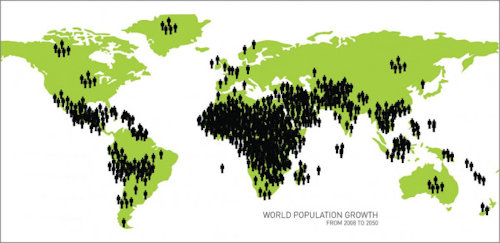 Paradoxically, the strong increase in the demographic factor is also partly a consequence of the relative improvement in living conditions recorded in the last twenty years, but it is having devastating effects by reducing, if not canceling, the positive effects of economic growth, where it occurs. In this way the pockets of poverty and the already relevant social differentiations increase. Furthermore, with the demographic increase, urbanization, unemployment (especially young people) or precarious daily employment without a contract increase dramatically. With high unemployment (or under-employment) migratory flows towards countries perceived as a salvation increase significantly and the instability and youth vocation towards violence, crime and terrorism increase.
Paradoxically, the strong increase in the demographic factor is also partly a consequence of the relative improvement in living conditions recorded in the last twenty years, but it is having devastating effects by reducing, if not canceling, the positive effects of economic growth, where it occurs. In this way the pockets of poverty and the already relevant social differentiations increase. Furthermore, with the demographic increase, urbanization, unemployment (especially young people) or precarious daily employment without a contract increase dramatically. With high unemployment (or under-employment) migratory flows towards countries perceived as a salvation increase significantly and the instability and youth vocation towards violence, crime and terrorism increase.
The problems of security
The picture has been further complicated with the emergence of very strong identity-rooted phenomena and with the importation of behaviors and ideologies from the Middle Eastern and Gulf radical universe, which have resulted in bloody violent actions and which are leading to paralysis. more fragile structures in some states. In this context, the situation in the Sahel is particularly serious and, at the moment, there are unfortunately no elements to give hope in the short term for a reduction of the phenomenon. Then emerges the looming threat of Boko Haram which, on the continent, has now taken on a transnational dimension.
Islamic terrorism represents in some ways the most worrying aspect. Meanwhile, being on a religious basis, rather than recruiting small groups on a local or ethnic basis, it is potentially able to mobilize many more fanatics under a common "Islamic" identity. Secondly, the collapse of Gaddafi's Libya first, and the end of ISIS in Siraq later, have contributed to the spread of terrorist cells in the Sahel area, where already existing Al Qaeda groups were joined by affiliated groups. to the Islamic State, often generated by ex-ISIS fighters. It should not be forgotten that terrorism is a powerful brake on development, as no one invests where there is a high risk of attacks / kidnappings / murders. The main groups are the already mentioned Boko Haram (present mainly in northeastern Nigeria and northern Cameroon) e Al-Shabaab, which has been raging for some time in Somalia and northern Kenya. As for Boko Haram alone, it has been calculated that this terrorist group has so far caused over 35.000 victims and forced about 2.000.000 people to move from their original areas4. In the broader regional framework, however, there is concern that Islamic terrorism is not confined to the countries indicated above but, albeit to a lesser extent, also has ramifications elsewhere (Democratic Republic of Congo, South Sudan, Central African Republic, Ethiopia, Mozambique, Cameroon).
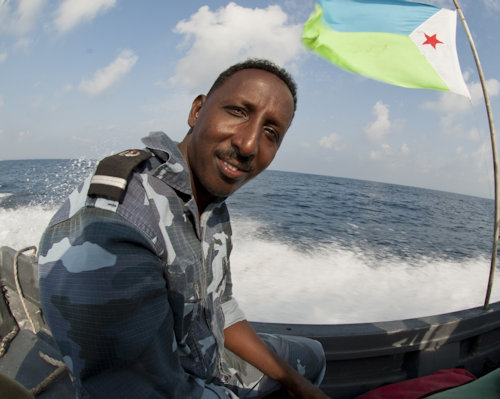 Added to this are the controversies in the Horn of Africa. The strategic importance of this area, connected to the Middle East and the Sahelian belt of which it is partially part, is evident if we consider that it controls, on the side facing the sea, all the maritime merchant traffic coming from the Far East and the Persian Gulf. At the end of the nineteenth century, the geostrategic concept that led Italy to organize the colonial penetration into Eritrea (joining the generalized colonialist race of the other European countries), was that the keys of the Mediterranean were in the Red Sea. A concept that briefly manages to express the importance that has characterized this area, in particular after the opening of the Suez Canal, on November 17, 1869. It is no coincidence that even today the great powers, in one way or in the other, they look for a base or a port of support in the Horn of Africa or in the neighboring areas (Djibouti).
Added to this are the controversies in the Horn of Africa. The strategic importance of this area, connected to the Middle East and the Sahelian belt of which it is partially part, is evident if we consider that it controls, on the side facing the sea, all the maritime merchant traffic coming from the Far East and the Persian Gulf. At the end of the nineteenth century, the geostrategic concept that led Italy to organize the colonial penetration into Eritrea (joining the generalized colonialist race of the other European countries), was that the keys of the Mediterranean were in the Red Sea. A concept that briefly manages to express the importance that has characterized this area, in particular after the opening of the Suez Canal, on November 17, 1869. It is no coincidence that even today the great powers, in one way or in the other, they look for a base or a port of support in the Horn of Africa or in the neighboring areas (Djibouti).
The instability of the area is today highlighted by the Ethiopian conflict between the legitimate government and the fighters of the Tigray region, who rebelled against the central government because they were marginalized from the political life of the country. A conflict that the rebels are trying to regionalize and internationalize at the same time. To make matters worse, there is an already very delicate local humanitarian situation, because in that region live about 600 thousand people who need humanitarian aid and another million who depend on other sources of international support.
To further threaten the already fragile sub-Saharan area, a confrontation on its north-western borders is recently resuming heat, between Morocco and the Polisario Front, the armed arm of the RASD, the self-proclaimed Saharan Arab Democratic Republic. An awakening that does not bode well. A new crisis area that could be reactivated after decades of relative sleep.
An overall fragility, that of sub-Saharan countries, where there is a real danger that local armed conflicts will cause the main state structures to collapse (education, justice, security). This would allow the jihadists to replace the initial political opponents, aggravating the situation and exacerbating the level of violence of the separatist groups, which would thus be able to conduct trafficking of all kinds with impunity. Alongside the militant jihadists, in fact, other militias often arise, which act as a catalyst for many desperate young people. From this point of view, the recent history of Mali is emblematic of the dynamics often present in some sub-Saharan areas.
The causes of armed conflict are therefore mainly endogenous and attributable to ethnic fragmentation, confessional differences and unrealistic borders. Violence and insecurity, therefore, fuel a fire that engulfs the entire Sahel region of the continent, also involving a large part of the Gulf of Guinea states. All this does nothing but contribute to increasing the migratory pressure towards those areas that appear to offer a better life, Europe in the first place. Elsewhere the situation appears to be improving, with the exception of Kenya, but given the past sudden outbursts of Congolese instability, for example, we must really question the possible duration of the current moment of relative calm.
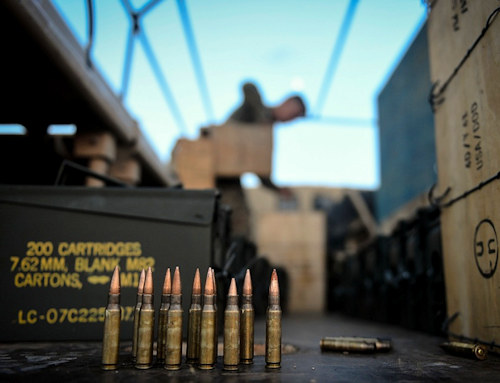 In this context, the Stockholm International Peace Research Institute (SIPRI) tells us that the expenses for military equipment in 2019 were about 17,7 billion dollars for the entire sub-Saharan area, with South Africa (3,465), Nigeria in the first four places. (1,860), Angola (1,471) and Kenya (1,148). Seven other countries follow (Sudan, Tanzania, Uganda, Zimbabwe, Botswana, Ivory Coast and Ethiopia) with a commitment ranging from 500 to 700 million dollars. But the market isn't just about money versus guns. In 2009, for example, China imported platinum and iron ores from Zimbabwe in exchange for weapons and electronic devices, which Mugabe used to keep the opposition at bay. Unfortunately, the flow of arms in sub-Saharan Africa is still unclear or even invisible today, so much so that some available data are not certain and some figures in the aforementioned SIPRI report are shown in red, i.e. they are estimated figures.
In this context, the Stockholm International Peace Research Institute (SIPRI) tells us that the expenses for military equipment in 2019 were about 17,7 billion dollars for the entire sub-Saharan area, with South Africa (3,465), Nigeria in the first four places. (1,860), Angola (1,471) and Kenya (1,148). Seven other countries follow (Sudan, Tanzania, Uganda, Zimbabwe, Botswana, Ivory Coast and Ethiopia) with a commitment ranging from 500 to 700 million dollars. But the market isn't just about money versus guns. In 2009, for example, China imported platinum and iron ores from Zimbabwe in exchange for weapons and electronic devices, which Mugabe used to keep the opposition at bay. Unfortunately, the flow of arms in sub-Saharan Africa is still unclear or even invisible today, so much so that some available data are not certain and some figures in the aforementioned SIPRI report are shown in red, i.e. they are estimated figures.
To better understand how there is a huge underground flow of money, which can be "safely" used for the anonymous purchase of weapons, just think that most of the cocaine destined for Europe and produced in Colombia, Peru and Bolivia passes through West Africa, where it is stored by the ton before being transferred to the Old Continent.
The foreign presence
For a whole variety of reasons, the United States did not carry out a broad-based continental-type policy in Africa, limiting itself to bilateral relations more attentive to contingent affinities and interests. Furthermore, US credibility in Africa suffered a severe blow after the publication of some documents showing how the US in the XNUMXs convinced Belgium to withdraw its UN troops from Rwanda, in order not to be involved in the spiral of violence that was going on. taking place5. This, according to some observers, would have aggravated the crisis between Hutu and Tutsi, which quickly spiraled out of control and resulted in more than a million deaths and around four million displaced.
However, the policy of substantial disengagement, also applied on this continent, did not prevent the Americans from strongly opposing the actions of the aforementioned Al-Shabaab group.
Then there are the Asian powers: China, South Korea, Japan and India. All hungry for energy, raw materials, food products and outlet markets for their goods. Among all, China stands out with its enormous needs, for the satisfaction of which it offers in exchange goods, workers, technology and capital. In order to diversify the sources of supply as much as possible and ensure continuity of supplies, Beijing applies an extremely dynamic and varied approach, with an increasingly widespread and widespread presence under the various forms of cooperation in the implementation of projects, trade exchanges, direct investments and joint ventures. Even if the relationship with the Chinese is not always easy (usually they do not integrate and coexistence with local communities suffers), the influx of Chinese capital and technology should be a powerful stimulus for growth. It is no coincidence that all the main African leaders participated in the 2006 China-Africa Summit.
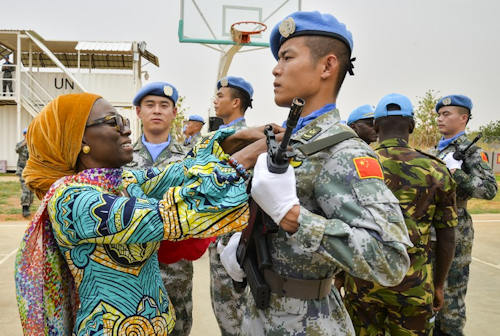 Chinese investments in sub-Saharan Africa are realized with the construction of infrastructures (railways, roads, schools, hospitals, oil extraction plants), with the support of programs in the field of health, civil protection, development agriculture, with the support of funds for food assistance programs, with the financing of vocational training programs and with the contribution to scholarships for African students (today there are more African students studying in China than those who studying in Great Britain or the USA). In exchange, China asks for land for agricultural exploitation (China has 20% of the world's population and only 7% of arable land), raw materials and oil for its industry. In this way, China offers investments and growth opportunities but, above all, offers a long-term political partnership alternative to the United States, Russia or the European Union, the latter increasingly stuttering in foreign policy.
Chinese investments in sub-Saharan Africa are realized with the construction of infrastructures (railways, roads, schools, hospitals, oil extraction plants), with the support of programs in the field of health, civil protection, development agriculture, with the support of funds for food assistance programs, with the financing of vocational training programs and with the contribution to scholarships for African students (today there are more African students studying in China than those who studying in Great Britain or the USA). In exchange, China asks for land for agricultural exploitation (China has 20% of the world's population and only 7% of arable land), raw materials and oil for its industry. In this way, China offers investments and growth opportunities but, above all, offers a long-term political partnership alternative to the United States, Russia or the European Union, the latter increasingly stuttering in foreign policy.
However, there are also those who condemn the unscrupulous Chinese approach to investments in the region, noting that countries that have the worst business practices or that have high corruption or that have problems with regard to civil rights are privileged. Such an approach would have "... led to an exacerbation of debt and very few job opportunities, if any, in most countries ..."6. Not only that, some observers also contest a strong imbalance in relations between the parties, in the sense that the benefits of cooperation seem to be significantly skewed in Beijing's favor. This raises fears that, by strengthening its presence in the economy, China will aim to exercise future control over the internal and foreign policies of individual states as well.
And then there are some Arab states, which seek investment opportunities and agricultural products, such as the United Arab Emirates and some other Gulf states.
Finally, there are the industrialized countries, including Europe, which on the one hand donate a lot and on the other hand tend to use the region as a reservoir of raw materials or invade it with low-cost products, substantially preventing the birth of indigenous industrial complexes. The permanent presence of European military ships in the waters off the continent should also be noted. An essential presence to combat piracy, a scourge that represents a continuous threat both for merchant ships bound for African ports and for passing ships. In particular, the maritime areas most subject to pirate attacks are those around the Horn of Africa and the coastal areas of the Gulf of Guinea. In each there are units inserted in multinational devices (Italy participates with two frigates), which have the purpose of preventing attacks on merchant ships, safeguarding the freedom of navigation and the continuity of maritime communication lines.
Finally, in an unstable framework such as the African one, the presence and action of the United Nations has been precious in many small conflicts, but without a truly continental breath and vision. However, despite all the limitations (even serious ones) that have emerged in the course of its history and even if it is evident that on the African chessboard it could do much more, the UN still appears to be the most suitable international instrument to give the answers that the continent is expected.
Conclusions
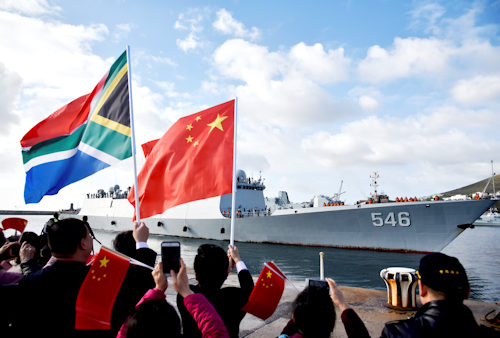 At the end of this quick African overview, a question remains. What is the best representation of Africa? What designs Africa as a continent of war, disease, poverty, hunger and natural disasters or is it that of a continent in rapid evolution?
At the end of this quick African overview, a question remains. What is the best representation of Africa? What designs Africa as a continent of war, disease, poverty, hunger and natural disasters or is it that of a continent in rapid evolution?
The answer we can give is simply that they are both correct interpretations, and faithfully represent the complex and varied picture of the African reality.
On the one hand, there are still critical issues such as the institutional fragility of many countries, governance problems, bloody internal conflicts, shortages in infrastructure and social services, severe imbalances in income distribution, widespread poverty, excessive dependence on export of raw materials, the bloody spread of sectarian terrorism.
On the other hand we have the presence of areas that instead have relative political stability, an absence of internal conflicts, an almost absence of terrorist groups and an economic growth that significantly improves the living conditions of the population.
At the moment, therefore, sub-Saharan Africa does not seem to display elements that can be considered as a direct threat to global security and stability.
On the other hand, it appears necessary to carefully consider China's growing interest and economic penetration in the continent, a phenomenon to which the European Union cannot remain indifferent. It is, in fact, an area whose geographical proximity considerably increases its political, military and social importance. The migratory phenomenon is able, as we well know, to unleash dynamics that are seriously destabilizing from a social point of view and also to call the naval military sector to carry out a further heavy and delicate commitment, in addition to the fight against piracy and other missions to protect national interests on the sea, wherever they are.
It would be advisable for a profound reflection to be carried out on this.
1 United Nations, World Population Prospects 2019
2 Source: www.tradingeconomics.com
3 The other countries are India, Pakistan, Indonesia, Egypt and the United States (source: United Nations)
4 Edward Kallon, UN Humanitarian Coordinator in Nigeria (Maiduguri, 7 November 2020)
5 Peter Frankopan, The new silk roads, Ed. Mondadori, 2019
6 Peter Frankopan, The new silk roads, Ed. Mondadori, 2019
Photo: US DoD / web / US Air Force / MoD People's Republic of China

